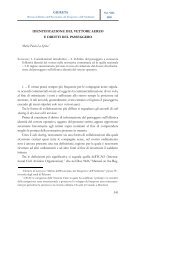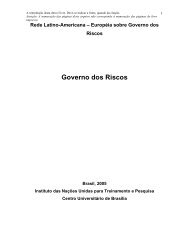Rome II and Tort Conflicts: A Missed Opportunity Abstract Contents
Rome II and Tort Conflicts: A Missed Opportunity Abstract Contents
Rome II and Tort Conflicts: A Missed Opportunity Abstract Contents
Create successful ePaper yourself
Turn your PDF publications into a flip-book with our unique Google optimized e-Paper software.
SYMEON C. SYMEONIDES ROME <strong>II</strong> AND TORT CONFLICTS<br />
176<br />
Ehrenzweig’s concept of foreign law as a datum. This phraseology is considerably<br />
narrower than the Commission’s proposal, which provided that these rules were to be<br />
177<br />
taken into account “in determining liability.” This restrictive formulation reduces<br />
Article 17 to a mere evidentiary instruction of how to assess the tortfeasor’s<br />
culpability. Unfortunately, this minimalist conception prevents Article 17 from<br />
becoming the useful corrective tool that <strong>Rome</strong> <strong>II</strong> sorely needs.<br />
Moreover, the <strong>Rome</strong> <strong>II</strong> drafters seem to envision an even narrower, one-sided<br />
role for Article 17. They describe it as tool for helping the tortfeasor, but not<br />
necessarily the victim. <strong>Rome</strong> <strong>II</strong>’s preamble states that Article 17 is necessary “[i]n<br />
178<br />
order to strike a reasonable balance between the parties,” while the Report seems<br />
to be preoccupied with the plight of “the perpetrator [who] must abide by the rules of<br />
179<br />
safety <strong>and</strong> conduct in force in the country in which he operates.” In rejecting<br />
Parliament’s attempt at first reading to make Article 17 inapplicable to cases of<br />
defamation <strong>and</strong> unfair competition, the Commission saw “no reason for depriving the<br />
perpetrators of these two categories of liability of the protection which this rule gives<br />
180<br />
them.” Elsewhere, the Report describes a situation falling within Article 7 in which<br />
the perpetrator complied with the lower environmental st<strong>and</strong>ards of the state of<br />
conduct but not with the higher st<strong>and</strong>ards of the state of injury. The Report concludes<br />
that, in such a situation, “[u]nder Article 17, the court must then be able to have regard<br />
to the fact that the perpetrator has complied with the rules in force in the country in<br />
which he is in business.” 181<br />
The view of this author is that, in cases such as the one described above, the<br />
concern for the perpetrator is excessive, if not misplaced. The key question in such<br />
cases should be whether, under these facts, a reasonable person should have foreseen<br />
that his conduct in the one state would produce injury in the other state. For example,<br />
one who operates a chemical factory in close proximity to the border in state A should<br />
have foreseen that the wind will likely carry the factory’s emissions across the border<br />
into state B. Under these circumstances, the operator should not be allowed to seek<br />
refuge in the lower st<strong>and</strong>ards of state A. Using Article 17 as such a refuge would be<br />
contrary to the spirit of Article 7 <strong>and</strong> the “polluter pays” principle that article<br />
176. See supra note 172.<br />
177. Commission Proposal, art. 13 (2003). Also, the phrase “as a matter of fact <strong>and</strong> in so far as is<br />
appropriate” was not part of the Commission’s proposal.<br />
178. ROME <strong>II</strong>, recital (34) (“In order to strike a reasonable balance between the parties, account must<br />
be taken of the rules of safety <strong>and</strong> conduct in operation in the country in which the harmful act<br />
was committed, even where the non-contractual obligations is governed by the law of another<br />
country.”).<br />
179. Explanatory Report, art. 13, at 25.<br />
180. COD/2003/0168 (Feb. 21, 2006) Commission modified legislative proposal (emphasis added).<br />
181. Explanatory Report under art. 7.<br />
56 AMERICAN JOURNAL OF COMPARATIVE LAW (2008) PAGE 41 OF 46



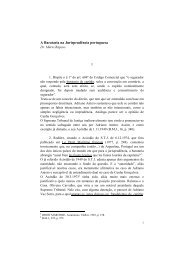

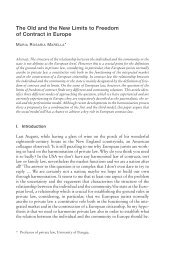

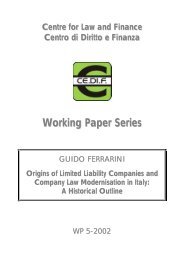
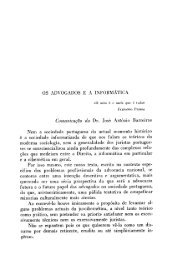
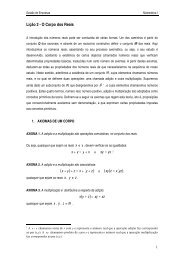
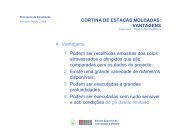
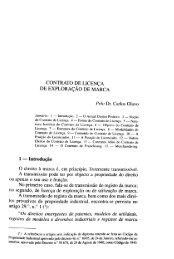
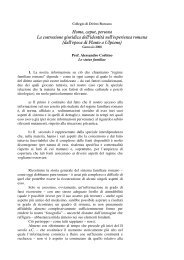
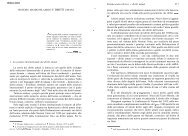
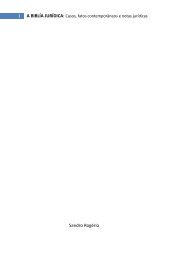
![Luigi Sapio Nozione di islām La parola “islām” [ ] è il mas.dar1 ...](https://img.yumpu.com/15836073/1/185x260/luigi-sapio-nozione-di-islam-la-parola-islam-e-il-masdar1-.jpg?quality=85)
